The kitchen is the heart of the home, and the right gadgets can transform it into a culinary playground. From everyday essentials to innovative tools, these top 10 kitchen gadgets will elevate your cooking experience and make meal prep a breeze.
Also Read-Top 10 Heart-Healthy Foods to Support Your Cardiovascular Wellness….click here
10. Kitchen Scale:
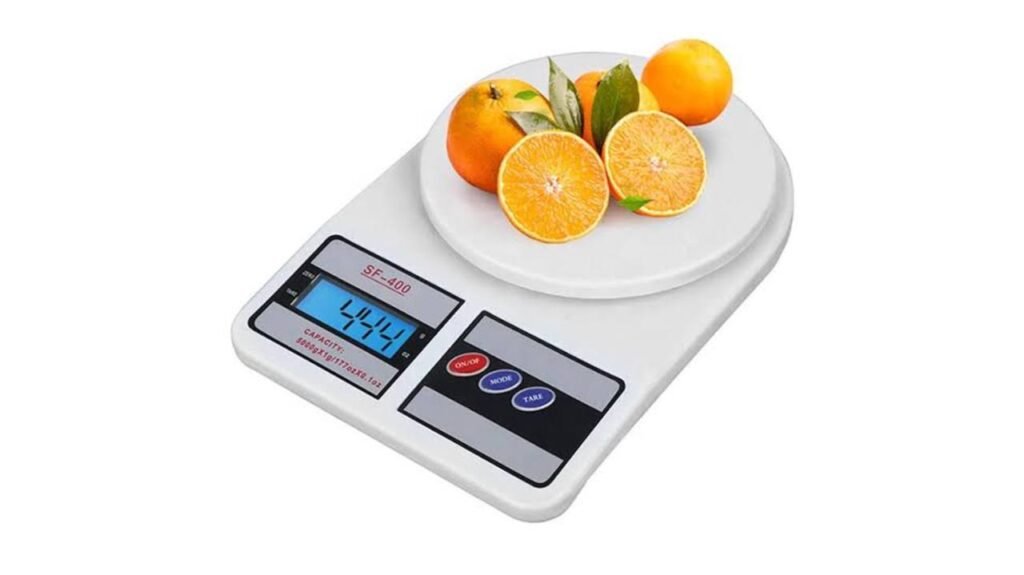
- Why it’s a game-changer: Accurate measurements are essential for baking and cooking.
- Key features: High precision, easy-to-read display, and various weighing units.
Kitchen Scale: A Cornerstone of Accurate Cooking
A kitchen scale is an essential tool for any serious home cook, especially bakers. Here’s why:
Why is a Kitchen Scale Important?
- Precision in Baking: Baking is a science, and accurate measurements are crucial for successful results. Volume measurements (like cups and spoons) can be inconsistent. A scale ensures you’re using the exact amount of each ingredient, leading to more predictable outcomes.
- Healthier Cooking: Many recipes, especially those focused on nutrition or weight management, rely on precise weight measurements.
- Reducing Waste: By accurately measuring ingredients, you avoid over- or under-measuring, minimizing food waste.
- Versatility: Beyond baking, a kitchen scale can be used for:
- Portion control: Tracking your food intake for weight management or dietary goals.
- Weighing produce: Determining the price of fruits and vegetables at the market.
- Checking package weights: Ensuring you’re getting the correct amount of packaged goods.
Key Features to Consider:
- Capacity: Choose a scale with a capacity that suits your needs. Most kitchen scales can handle up to 5-10 kg (11-22 lbs), which is sufficient for most home cooking.
- Accuracy: Look for a scale with high accuracy, typically measured in grams (g).
- Tare Function: This essential feature allows you to zero out the weight of a container (like a bowl) before adding ingredients.
- Unit Conversion: Many scales offer the ability to switch between different units of measurement (grams, ounces, pounds, etc.).
- Durability: Choose a sturdy and durable scale that can withstand regular use.
- Ease of Use: Look for a scale with a clear display, easy-to-clean surface, and simple controls.
Tips for Using a Kitchen Scale:
- Place it on a stable surface: Avoid placing the scale on uneven surfaces, as this can affect accuracy.
- Calibrate regularly: Check the scale’s accuracy periodically by weighing known weights.
- Clean it regularly: Wipe down the scale with a damp cloth to remove any residue.
By incorporating a kitchen scale into your cooking routine, you’ll experience greater accuracy, consistency, and success in the kitchen.
9. Instant-Read Thermometer:
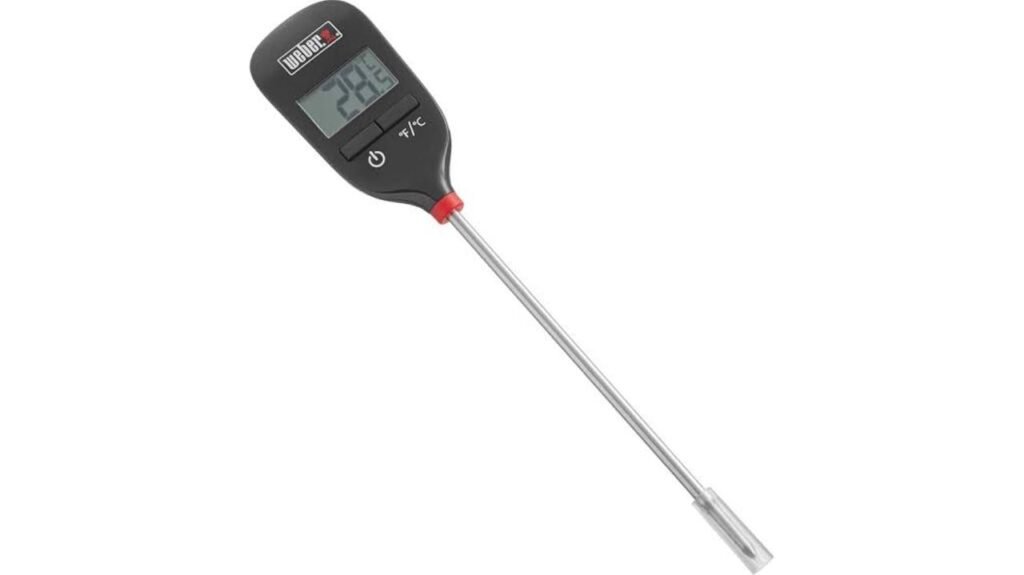
- Why it’s a game-changer: Ensures perfectly cooked meats, poultry, and fish every time.
- Key features: Fast and accurate readings, easy-to-read display, and compact and portable design.
Instant-Read Thermometer: Your Key to Perfectly Cooked Food
An instant-read thermometer is a small, handheld device that provides quick and accurate temperature readings of food. It’s a must-have for any serious home cook, ensuring perfectly cooked meats, poultry, and other dishes every time.
Why is it essential?
- Food Safety: Cooking food to the correct internal temperature is crucial for food safety and preventing foodborne illnesses.
- Consistent Results: Eliminates guesswork and ensures consistent doneness, whether you’re grilling steaks, roasting chicken, or baking fish.
- Improved Flavor: Cooking to the proper temperature helps to maximize flavor and tenderness.
- Peace of Mind: Knowing your food is cooked safely and thoroughly provides peace of mind for you and your family.
Key Features:
- Fast Readings: Provides accurate temperature readings within seconds.
- Easy to Read Display: Clear and easy-to-read display, often with both Fahrenheit and Celsius readings.
- Durable Construction: Made from durable materials like stainless steel for long-lasting use.
- Compact and Portable: Easy to store and transport, making it ideal for both indoor and outdoor cooking.
- Temperature Range: Covers a wide range of temperatures, suitable for various types of food.
How to Use an Instant-Read Thermometer:
- Calibrate your thermometer: Follow the manufacturer’s instructions for calibration to ensure accurate readings.
- Insert the probe: Insert the probe into the thickest part of the food, avoiding bone.
- Read the temperature: Wait a few seconds for the reading to stabilize.
- Check against recommended temperatures: Refer to a reliable food safety chart for recommended internal temperatures for different types of meat and poultry.
Tips for Using an Instant-Read Thermometer:
- Clean the probe: Wash the probe with soap and water after each use.
- Store properly: Store the thermometer in a safe and dry place.
- Check battery life: Replace batteries as needed to ensure accurate readings.
By investing in a quality instant-read thermometer and using it correctly, you can elevate your cooking skills and enjoy delicious, safe, and perfectly cooked meals every time.
8. Dutch Oven:
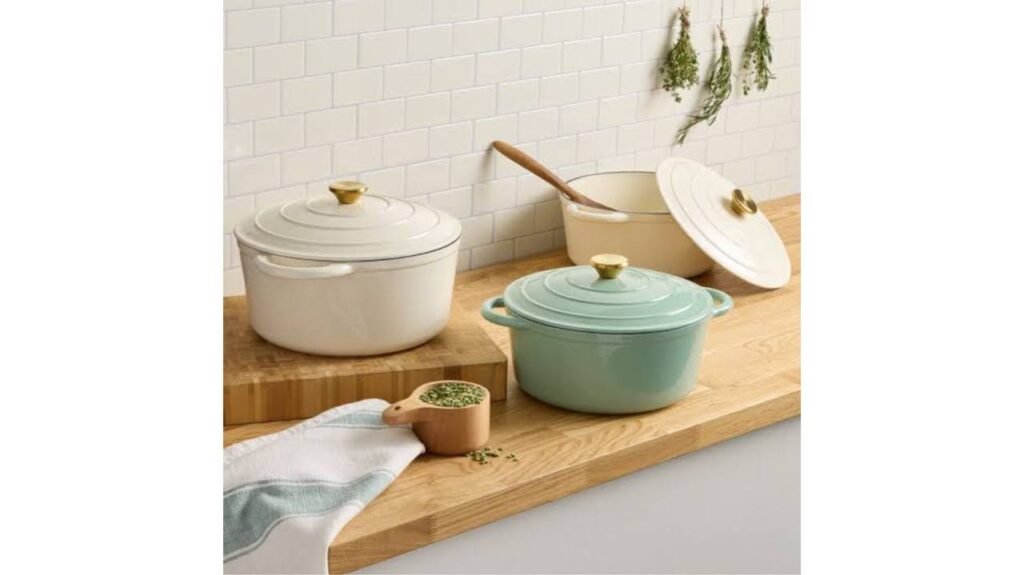
- Why it’s a game-changer: Ideal for braising, stews, soups, and even baking bread.
- Key features: Heavy-duty construction, excellent heat retention, and versatile cooking capabilities.
Dutch Oven: A Culinary Workhorse
A Dutch oven is a versatile and indispensable tool for any serious home cook. This heavy-duty pot, typically made of cast iron or ceramic, is designed for slow, even cooking, making it perfect for a variety of dishes.
Key Features:
- Thick walls and tight-fitting lid: These features help to trap heat and moisture, creating a moist and flavorful cooking environment.
- Even heat distribution: Cast iron and ceramic are excellent heat conductors, ensuring that your food cooks evenly and thoroughly.
- Versatility: Dutch ovens can be used for a wide range of cooking methods, including braising, stewing, roasting, baking, and even frying.
Common Uses:
- Braising: Slow-cooking tough cuts of meat in liquid to make them tender and flavorful.
- Stews: Creating hearty and comforting stews packed with vegetables and meat.
- Roasting: Roasting chicken, vegetables, and other dishes in the oven.
- Baking: Baking bread, casseroles, and other dishes that require even heat distribution.
- Frying: Searing meats and vegetables for a flavorful crust.
Types of Dutch Ovens:
- Cast Iron Dutch Ovens: These are the most popular type, known for their durability and excellent heat retention. They often require seasoning to prevent rust.
- Ceramic Dutch Ovens: These are lighter than cast iron and often come in vibrant colors. They are non-reactive and easy to clean.
- Enameled Cast Iron Dutch Ovens: These combine the durability of cast iron with the easy-to-clean surface of enamel.
Tips for Using a Dutch Oven:
- Seasoning: If you have a cast iron Dutch oven, it’s important to season it properly to prevent rust and create a natural non-stick surface.
- Heat Distribution: Allow the Dutch oven to heat up gradually over medium heat before adding your ingredients.
- Low and Slow: Most Dutch oven recipes call for low and slow cooking to ensure that the flavors meld together and the meat becomes tender.
- Care and Cleaning: Hand-wash your Dutch oven with warm soapy water and dry it thoroughly to prevent rust.
7. Cast Iron Skillet:

- Why it’s a game-changer: Durable and versatile, perfect for searing meats, frying eggs, baking cornbread, and more.
- Key features: Even heat distribution, long-lasting durability, and can be used on the stovetop and in the oven.
Cast Iron Skillet: A Kitchen Workhorse
A cast iron skillet is a culinary essential for any home cook. Its versatility, durability, and ability to develop a natural non-stick surface make it a valuable addition to any kitchen arsenal.
Key Features:
- Superior Heat Retention: Cast iron excels at holding and distributing heat evenly, making it ideal for searing, frying, and slow cooking.
- Durability: Cast iron skillets are incredibly durable and can last for generations with proper care.
- Versatility: Suitable for a wide range of cooking tasks, from searing steaks and frying eggs to baking cornbread and roasting vegetables.
- Seasoning: Over time, cast iron develops a natural non-stick coating called “seasoning” through repeated use and oiling. This seasoning improves with each use, making cooking and cleaning easier.
Cooking with Cast Iron:
- Searing: Cast iron’s excellent heat retention allows for perfect searing of meats, creating a delicious crust while locking in juices.
- Frying: Ideal for frying eggs, pancakes, and other foods that require even heat distribution.
- Baking: Cast iron skillets can be used in the oven for baking cornbread, cobblers, and even pizzas.
- Braising: Its ability to hold and distribute heat makes it perfect for slow-cooking braised meats and vegetables.
Care and Maintenance:
- Hand Washing: Always hand wash with hot water and a gentle brush or sponge. Avoid harsh detergents, which can strip away the seasoning.
- Drying Thoroughly: Dry the skillet immediately after washing to prevent rust.
- Seasoning: After washing and drying, apply a thin layer of oil to the skillet and heat it over low heat until the oil is absorbed. This helps maintain the seasoning and prevent rust.
6. High-Quality Chef’s Knife:
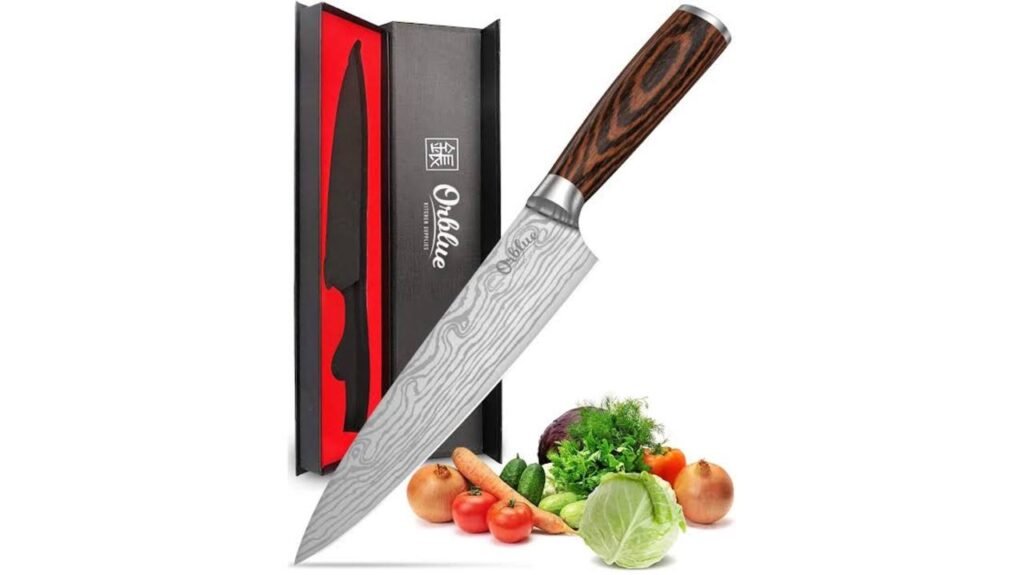
- Why it’s a game-changer: A sharp chef’s knife is the foundation of any well-equipped kitchen. It’s versatile for chopping, slicing, and dicing.
- Key features: Comfortable grip, balanced weight, and high-quality steel for excellent edge retention.
A High-Quality Chef’s Knife: Your Kitchen’s Unsung Hero
A high-quality chef’s knife is more than just a tool; it’s an investment in your culinary journey. The right knife can make a world of difference in how you prepare food, from effortless chopping to precise slicing.
Why a High-Quality Chef’s Knife Matters
- Efficiency: A sharp knife requires less effort, making cooking faster and more enjoyable.
- Safety: A sharp knife is actually safer than a dull one. Dull knives are more likely to slip and cause accidents.
- Versatility: A chef’s knife is incredibly versatile, capable of handling a wide range of tasks, from mincing garlic to chopping vegetables to slicing meats.
- Durability: A high-quality knife is built to last, providing years of reliable service.
Key Features of a High-Quality Chef’s Knife
- Blade Material:
- High-Carbon Steel: Excellent edge retention but may require more maintenance.
- Stainless Steel: Resistant to rust and corrosion, easier to maintain.
- German Steel: Known for its excellent balance of hardness and flexibility.
- Japanese Steel: Renowned for its exceptional sharpness and thinness.
- Handle:
- Comfortable grip: Choose a handle that feels good in your hand and provides a secure grip.
- Durable materials: Look for handles made from durable materials like wood, plastic, or composite.
- Blade Shape and Size:
- Classic Chef’s Knife: Typically 8-10 inches long with a curved blade.
- Santoku Knife: A Japanese-style knife with a straighter blade and a granton edge (hollow grooves) to prevent food from sticking.
- Sharpness:
- Properly sharpened: A sharp knife should slice through paper cleanly.
- Regular sharpening: Invest in a good quality sharpening steel or honing steel to maintain the edge.
Caring for Your Chef’s Knife:
- Hand wash: Avoid putting your knife in the dishwasher, as this can damage the blade.
- Dry immediately: Dry the knife thoroughly with a clean towel to prevent rust.
- Store safely: Store your knife in a knife block, magnetic strip, or a protective sheath.
5. Food Processor:

- Why it’s a game-changer: Chop, slice, shred, and puree with ease. Essential for making doughs, sauces, and dips.
- Key features: Multiple attachments, powerful motor, and variable speed settings.
Food Processor: A Kitchen Workhorse
A food processor is a versatile kitchen appliance that can significantly speed up meal prep and expand your culinary repertoire. It’s essentially a mini kitchen in a box, capable of performing a wide range of tasks that would otherwise be time-consuming and labor-intensive.
Key Functions:
- Chopping: Quickly and evenly chop vegetables, nuts, herbs, and more.
- Slicing: Slice fruits and vegetables into uniform pieces, perfect for salads, stir-fries, and garnishes.
- Shredding: Shred cheese, vegetables (like carrots and cabbage), and even potatoes for hash browns.
- Pureeing: Create smooth sauces, soups, and dips with ease.
- Mixing: Mix doughs for cookies, breads, and pastries.
- Grinding: Grind nuts, coffee beans, and spices.
Benefits of Using a Food Processor:
- Time-Saving: Reduces prep time significantly for many dishes.
- Consistent Results: Ensures even chopping and slicing for uniform cooking.
- Less Mess: Minimizes the mess associated with manual chopping and dicing.
- Versatile: Can handle a wide range of tasks, making it a valuable addition to any kitchen.
- Improved Cooking: Encourages experimentation with new recipes and culinary techniques.
Choosing the Right Food Processor:
- Consider your needs: Determine the primary tasks you’ll be using it for (chopping, slicing, pureeing, etc.).
- Processor size: Select a size that fits your needs and available counter space.
- Motor power: Choose a model with a powerful motor for tougher tasks like kneading dough.
- Attachments: Consider the included attachments (blades, discs) and whether they meet your needs.
- Ease of use: Look for models with easy-to-clean parts and intuitive controls.
Tips for Using Your Food Processor:
- Read the manual: Familiarize yourself with the safety instructions and operating procedures.
- Start with small batches: Begin with small amounts of food to get a feel for the processor.
- Use the pulse button: For more control, use the pulse button for short bursts of power.
- Clean thoroughly: Clean the bowl, blades, and other parts immediately after use.
4. Immersion Blender:
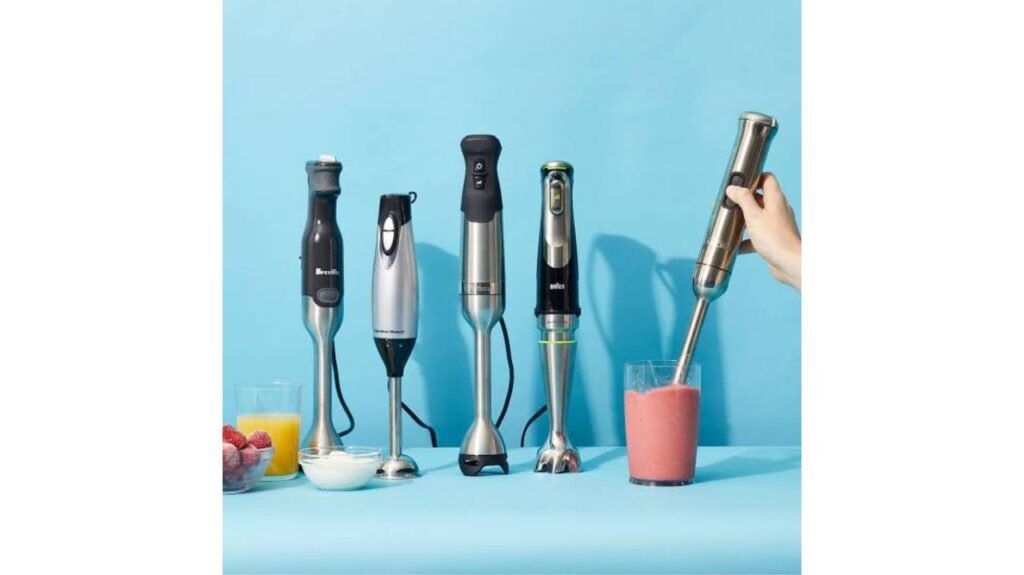
- Why it’s a game-changer: Puree soups and sauces directly in the pot, whip up smoothies, and emulsify dressings with ease.
- Key features: Powerful motor, variable speed settings, and easy-to-clean attachments.
Immersion Blender: A Versatile Kitchen Tool
An immersion blender, also known as a stick blender or hand blender, is a compact and versatile kitchen appliance that can significantly streamline your cooking and meal prep.
How it Works:
- Simple Design: It consists of a motor unit and a detachable blending arm with blades at the end.
- Direct Blending: You immerse the blending arm directly into the ingredients you want to process, whether it’s a pot on the stove, a bowl, or even a pitcher.
- Versatility: The immersion action allows for precise control and easy blending of various textures.
Key Uses:
- Pureeing Soups and Sauces: Effortlessly puree soups, stews, and sauces right in the pot, saving time and reducing cleanup.
- Making Smoothies and Shakes: Blend fruits, vegetables, and liquids directly in a pitcher or glass.
- Emulsifying Dressings: Create smooth and creamy dressings like mayonnaise and aioli.
- Whipping Cream and Eggs: Whip cream, egg whites, and other ingredients for various recipes.
- Making Baby Food: Puree fruits and vegetables for homemade baby food.
- Chopping Herbs and Nuts: Some models come with attachments for chopping herbs, nuts, and even ice.
Benefits of Using an Immersion Blender:
- Convenience: Eliminates the need for transferring ingredients to a separate blender.
- Versatility: Handles a wide range of tasks, from pureeing to whipping.
- Compact Storage: Easy to store in a drawer or cupboard.
- Easy to Clean: Most parts are dishwasher-safe.
Choosing the Right Immersion Blender:
- Power: Look for a model with a powerful motor for efficient blending.
- Speed Settings: Variable speed settings provide greater control.
- Attachments: Consider models with additional attachments like whisks, choppers, or blending beakers.
- Ease of Use: Choose a model with a comfortable grip and easy-to-use controls.
Tips for Using an Immersion Blender:
- Start Slowly: Begin at a low speed and gradually increase as needed.
- Move the Blender Up and Down: This ensures even blending and prevents splashing.
- Use a Wide Container: For best results, use a wide bowl or pot to prevent splattering.
- Clean Immediately After Use: This prevents food from drying and becoming difficult to remove.
3. Stand Mixer:
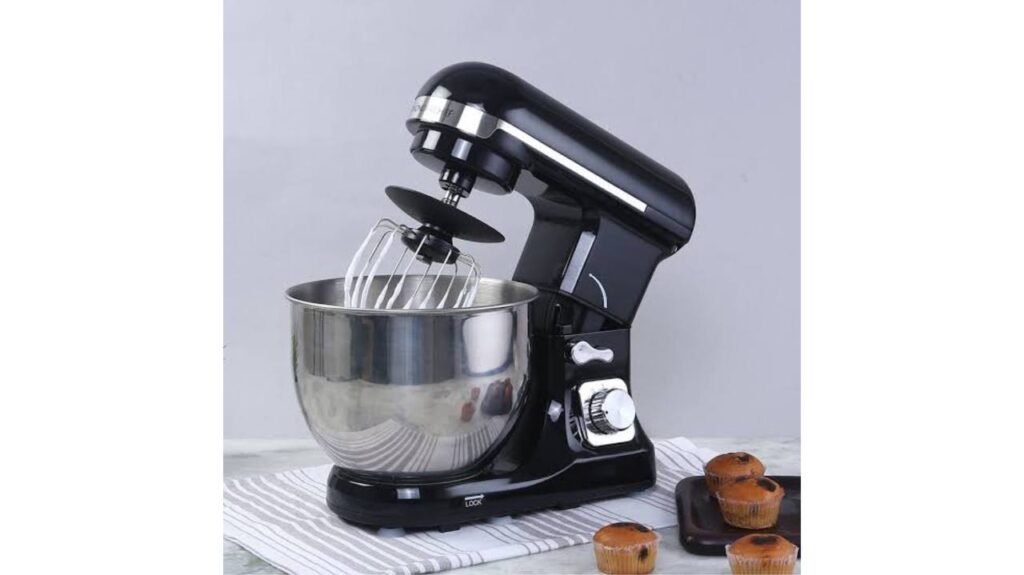
- Why it’s a game-changer: A workhorse in the kitchen, ideal for mixing doughs, whipping cream, and making batters.
- Key features: Powerful motor, various attachments (dough hook, whisk, paddle), and tilt-head or bowl-lift designs.
Stand Mixer: A Kitchen Workhorse
A stand mixer is a powerful kitchen appliance that takes the effort out of mixing, beating, and kneading. It’s a versatile tool that can handle a wide range of tasks, from whipping cream to kneading bread dough.
Key Features:
- Powerful Motor: Stand mixers typically have powerful motors that can handle heavy mixing tasks, such as kneading bread dough or whipping large batches of cream.
- Attachments: Most stand mixers come with a variety of attachments, including:
- Flat Beater: Ideal for mixing batters, mashed potatoes, and other ingredients.
- Wire Whisk: Perfect for whipping cream, egg whites, and airy batters.
- Dough Hook: Designed for kneading bread dough and other heavy doughs.
- Tilt-Head or Bowl-Lift Design:
- Tilt-Head: The head of the mixer tilts up, allowing easy access to the bowl for adding ingredients and cleaning.
- Bowl-Lift: The entire bowl lifts up and away from the motor, providing easier access to the ingredients and attachments.
- Speed Settings: Most stand mixers offer multiple speed settings, allowing you to control the mixing intensity.
Benefits of Using a Stand Mixer:
- Saves Time and Effort: Eliminates the need for manual mixing, saving you time and energy.
- Consistent Results: Ensures even mixing and incorporates air into ingredients for lighter textures.
- Versatility: Handles a wide range of tasks, from baking cakes and cookies to making pasta and ice cream.
- Durability: Built to last, with sturdy construction and long-lasting motors.
Tips for Choosing a Stand Mixer:
- Consider your needs: Think about the types of recipes you’ll be making most often to determine the size and power you need.
- Compare features: Look for features like speed settings, attachments, and bowl capacity.
- Read reviews: See what other users have to say about the performance and durability of different models.
- Consider your budget: Stand mixers come in a wide range of prices, so set a budget and stick to it.
2. Air Fryer:
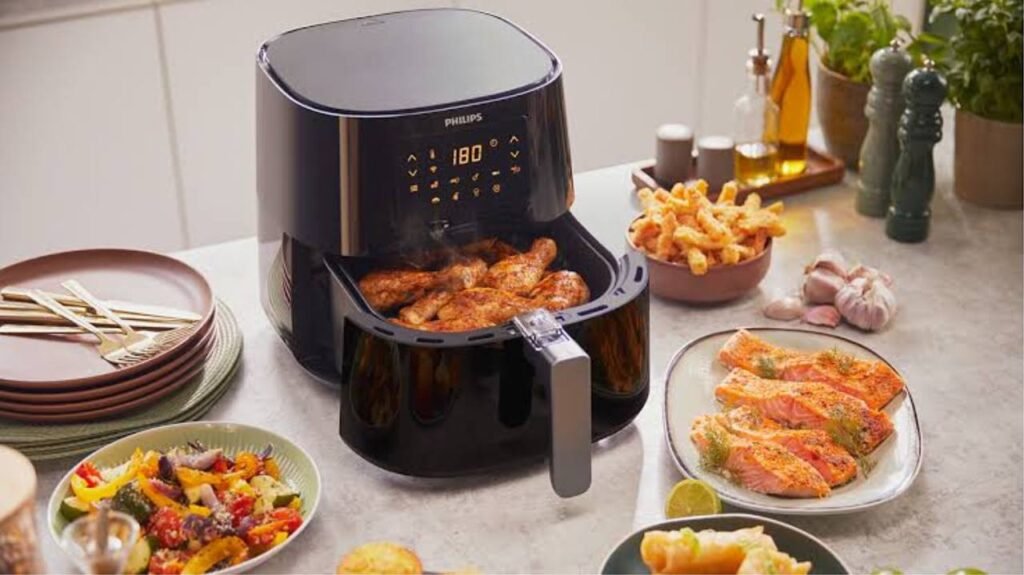
- Why it’s a game-changer: Enjoy crispy, fried foods with significantly less oil. Perfect for fries, chicken wings, vegetables, and even desserts.
- Key features: Rapid air circulation technology, adjustable temperature settings, and easy-to-clean baskets.
Air Fryer: A Healthier Alternative to Deep Frying
Air fryers have become incredibly popular in recent years, and for good reason. They offer a healthier and more convenient way to enjoy crispy, fried foods with significantly less oil.
How it Works:
- Rapid Air Circulation: Air fryers utilize a powerful fan to circulate hot air around the food at high speeds. This rapid air circulation cooks the food quickly and evenly, creating a crispy exterior while preserving its moist interior.
- Minimal Oil: Unlike traditional deep frying, which submerges food in hot oil, air fryers require very little oil. You can often achieve crispy results with just a light spray or a small amount of oil.
Benefits of Using an Air Fryer:
- Healthier Option: Significantly reduces oil consumption, leading to fewer calories and less fat intake.
- Versatility: Can cook a wide variety of foods, including French fries, chicken wings, vegetables, fish, and even some desserts.
- Convenience: Quick and easy to use, with minimal cleanup required.
- Crispy Results: Achieves that signature crispy texture without the need for excessive oil.
Tips for Using an Air Fryer:
- Shake or Toss: To ensure even cooking, shake or toss the food halfway through the cooking process.
- Don’t Overcrowd: Avoid overcrowding the basket, as this can hinder air circulation and prevent even cooking.
- Experiment with Recipes: Explore a variety of air fryer recipes online to discover new and exciting ways to use your appliance.
Key Features to Look for:
- Capacity: Choose a size that suits your needs and the size of your household.
- Temperature Control: Adjustable temperature settings allow you to cook a variety of foods at the appropriate temperature.
- Timer: A built-in timer ensures that your food is cooked to perfection.
- Ease of Cleaning: Look for models with easy-to-clean baskets and removable parts.
1. Instant Pot:
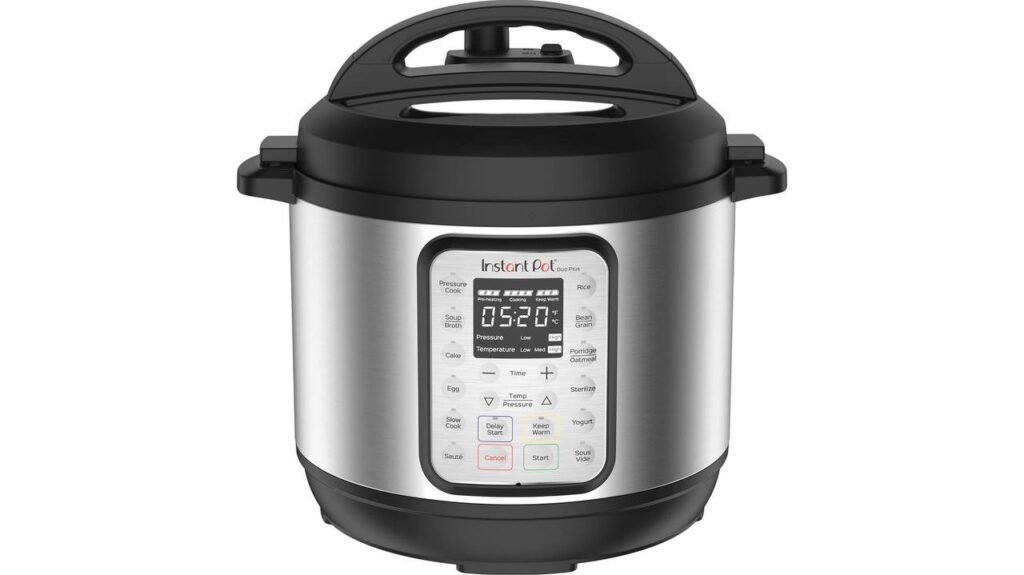
- Why it’s a game-changer: This multi-functional appliance can pressure cook, slow cook, steam, sauté, yogurt, and more. It’s a time-saver for busy weeknights and a versatile tool for a variety of dishes.
- Key features: Digital controls, programmable settings, and a convenient keep-warm function.
The Instant Pot is a multi-functional electric pressure cooker that has become a kitchen staple for many. Here’s a breakdown of its key features and benefits:
Key Features:
- Multi-functionality: It’s not just a pressure cooker! It can also function as a slow cooker, rice cooker, yogurt maker, steamer, sauté pan, and food warmer. This versatility makes it a valuable addition to any kitchen.
- Speed and Efficiency: Pressure cooking significantly reduces cooking times compared to traditional methods like stovetop or oven cooking. This saves time and energy.
- Ease of Use: The Instant Pot features intuitive controls, making it easy to operate even for novice cooks.
- Safety Features: Equipped with multiple safety mechanisms, including automatic pressure regulation and overheat protection.
- Versatility: Can cook a wide range of dishes, from meats and stews to soups, beans, and even desserts.
Benefits:
- Time-saving: Reduces cooking times dramatically, making it ideal for busy weeknights.
- Energy-efficient: Often more energy-efficient than traditional cooking methods.
- Healthy cooking: Retains more nutrients compared to some other cooking methods.
- Flavorful results: Creates tender and flavorful dishes with minimal effort.
- Convenience: Easy to clean and maintain.

